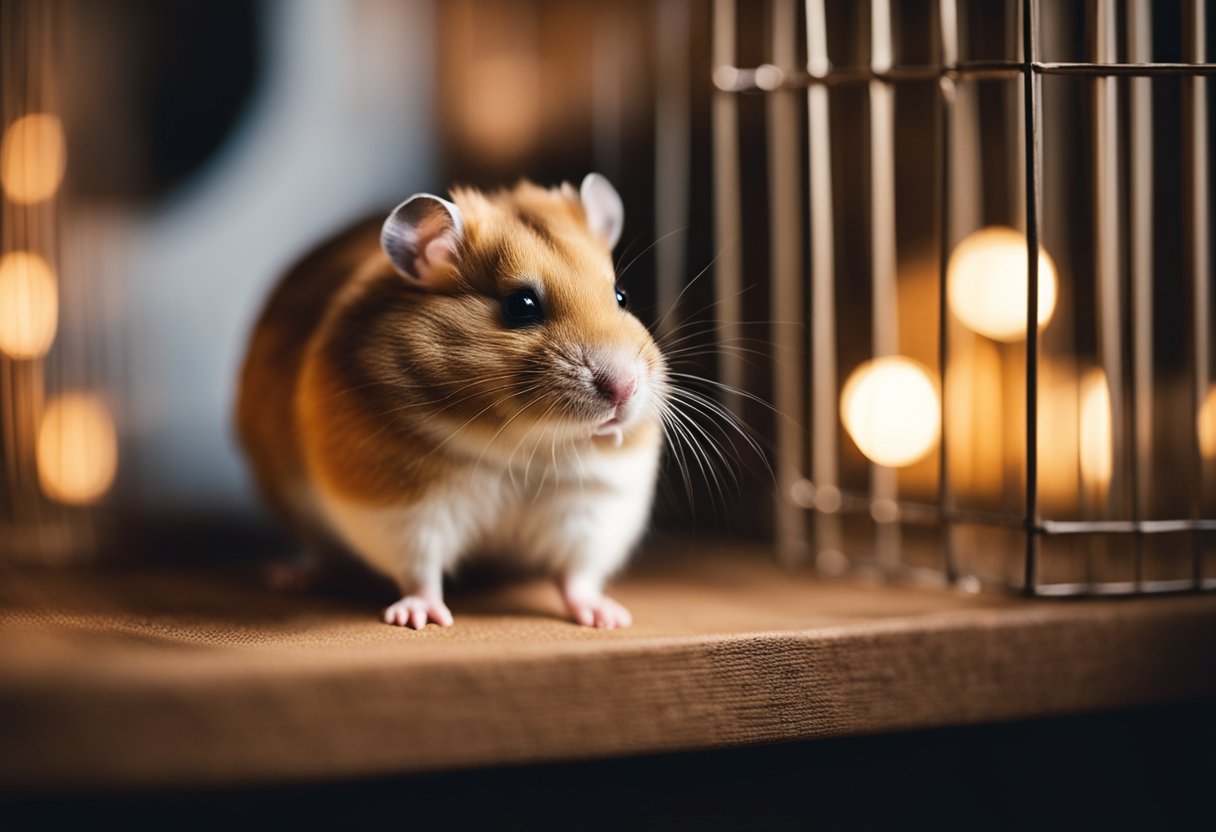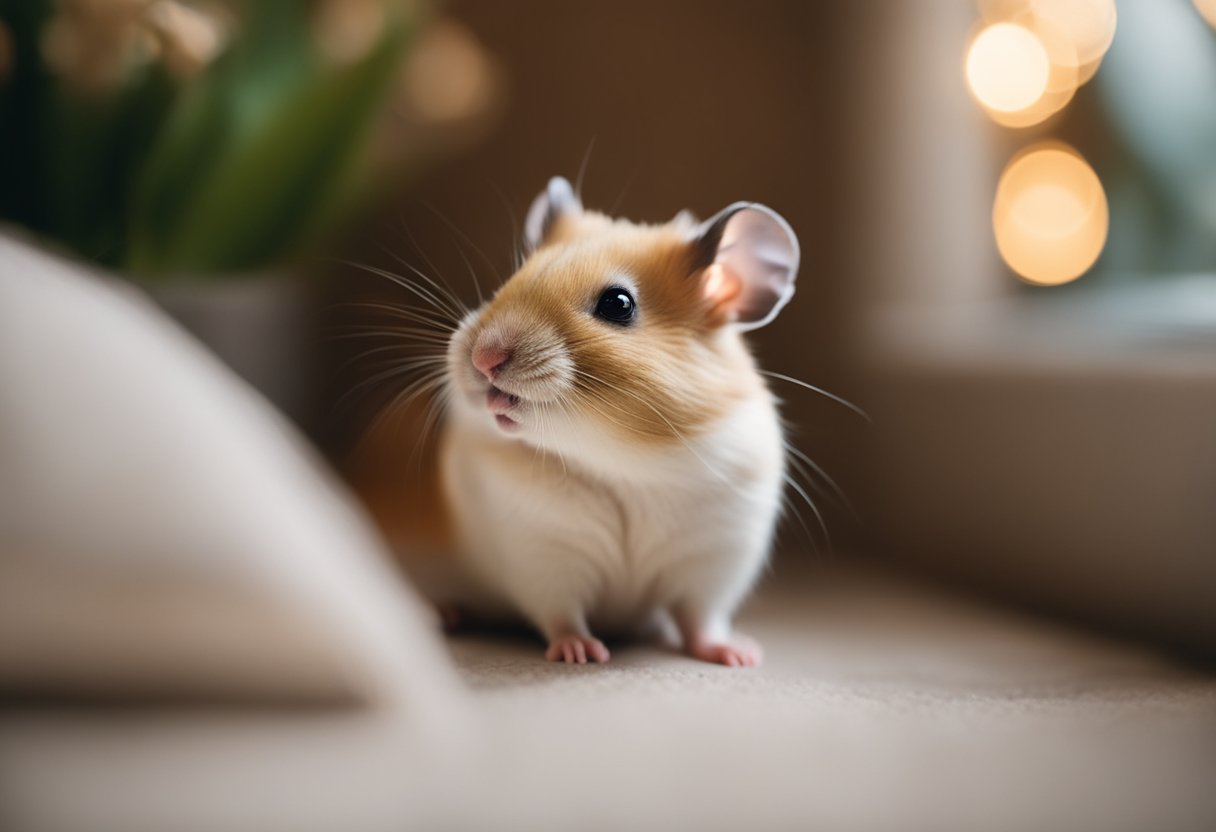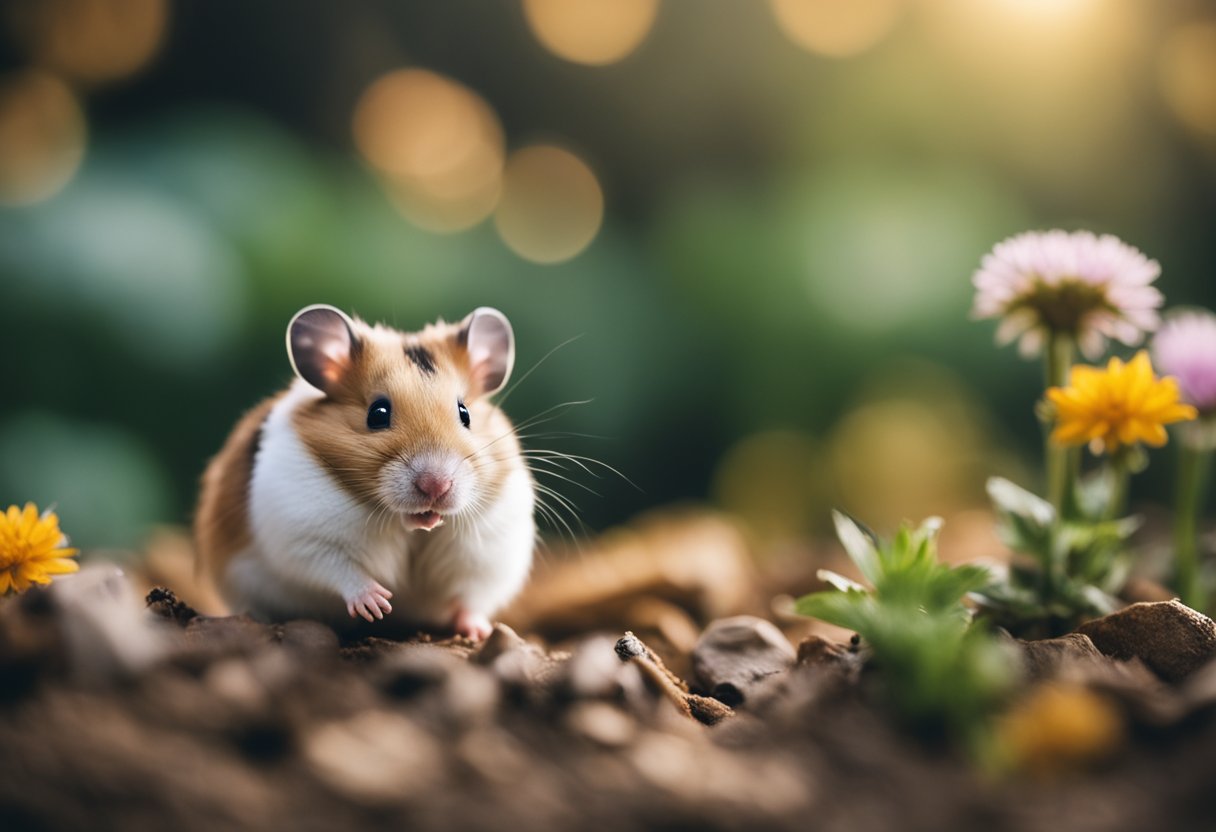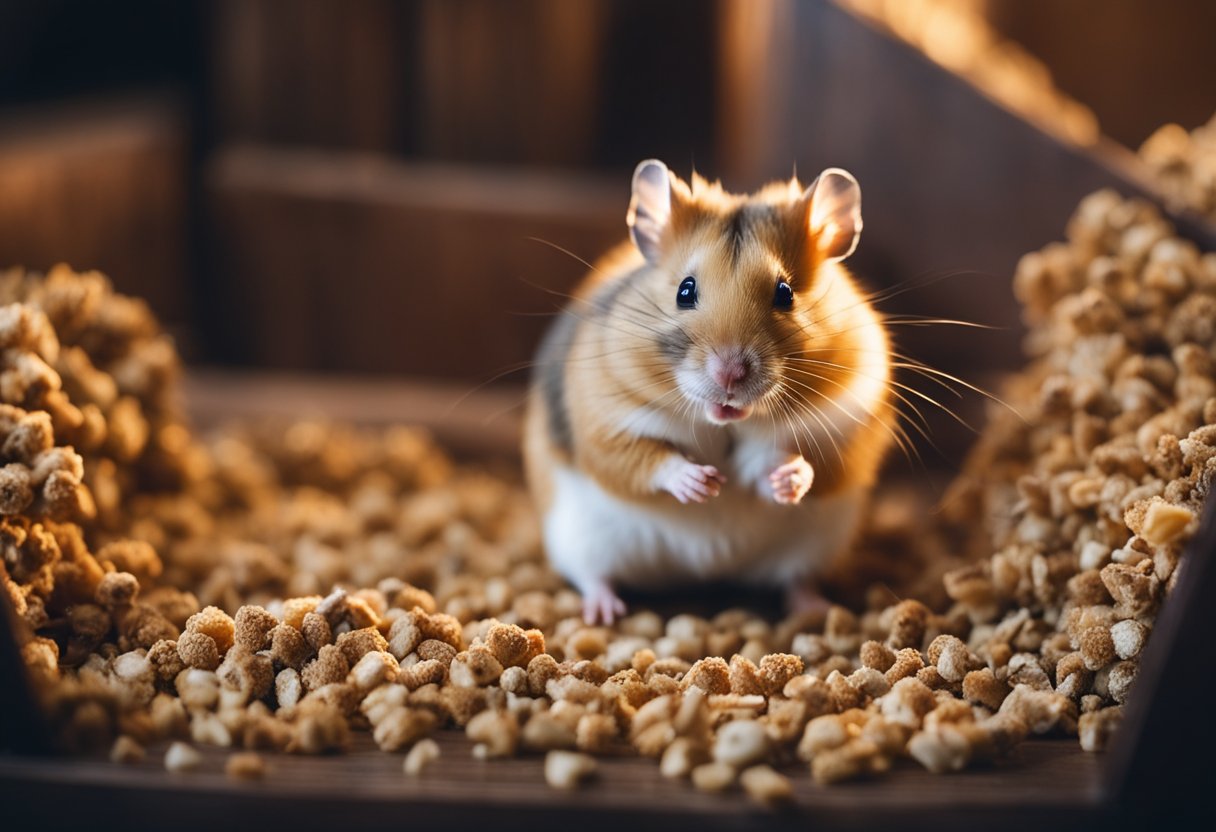Do Hamsters Like the Quiet? Exploring the Relationship Between Hamsters and Noise Levels
Hamsters are one of the most popular pets in the world, and for good reason. They are adorable, easy to take care of, and fun to watch. However, as a pet owner, you might be wondering if your hamster likes the quiet. After all, hamsters are known for being active at night, so it’s natural to wonder if they prefer a noisy or quiet environment.

Hamsters are sensitive creatures that have specific sensory preferences. They have excellent hearing and can hear frequencies that humans cannot. Loud noises can cause them distress and even lead to health problems. As a result, hamsters prefer a quiet environment where they can feel safe and secure. It’s essential to keep this in mind when creating a comfortable habitat for your pet.
Key Takeaways
- Hamsters prefer a quiet environment where they can feel safe and secure.
- Loud noises can cause them distress and even lead to health problems.
- Creating a comfortable habitat that takes into account their sensory preferences is crucial for your hamster’s well-being.
Hamster Sensory Preferences

Hamsters are crepuscular creatures, meaning they are most active during dawn and dusk. They prefer quiet environments during these times, as they are sensitive to sound. Loud or sudden noises can startle them, causing them to become stressed or anxious.
Auditory Sensitivity
Hamsters have excellent hearing, and their sensitive ears can pick up high-pitched sounds that humans cannot hear. They use their sense of hearing to communicate with other hamsters, locate food and water, and detect potential predators.
According to Fluffy Tamer, hamsters prefer environments with low noise levels, and they are most active at night when it is usually quieter than during the day. If you have a noisy environment, such as a TV or radio, it is best to keep it away from your hamster’s cage.
Environmental Stressors
Hamsters are sensitive to environmental stressors. They can become stressed or anxious if they are exposed to sudden changes in their environment, such as loud noises, bright lights, or strong smells.
As per Childhood Pets, it is essential to keep your hamster’s cage in a quiet area away from any potential stressors. If you have a noisy household, you can use soundproofing materials to reduce the noise level. You can also provide your hamster with a hiding spot, such as a cardboard box or a small house, where they can retreat to if they feel stressed or anxious.
In conclusion, hamsters prefer quiet environments with low noise levels. They are sensitive to sudden changes in their environment and can become stressed or anxious if exposed to loud noises or other stressors. By providing your hamster with a quiet, stress-free environment, you can help ensure that they are happy and healthy.
Creating a Comfortable Habitat

When it comes to creating a comfortable habitat for your hamster, there are a few things to keep in mind. In this section, we’ll cover noise level considerations and habitat enrichment to ensure that your furry friend is happy and healthy.
Noise Level Considerations
Hamsters are sensitive to noise, so it’s important to keep their habitat in a quiet area of your home. Avoid placing their cage near a television, stereo, or any other source of loud noise. If you have children or other pets, make sure they understand that the hamster’s habitat is a quiet zone.
In addition to keeping the noise level down, you can also provide your hamster with a quiet environment by choosing the right type of bedding. Some types of bedding, such as wood shavings, can be noisy when the hamster moves around. Opt for a quieter option, such as paper-based bedding or shredded paper.
Habitat Enrichment
A comfortable habitat is more than just a quiet environment. Your hamster also needs plenty of opportunities for enrichment to keep them happy and healthy. Here are a few ideas:
- Provide plenty of hiding spots, such as commercial hamster houses, small cardboard boxes, or even pieces of PVC pipe. Arrange them in a way that encourages exploration and play.
- Offer a variety of toys, such as chew toys, tunnels, and exercise wheels. Make sure they are safe and appropriate for your hamster’s size and breed.
- Regularly rotate toys and accessories to keep things interesting and prevent boredom.
- Ensure that your hamster has access to fresh water and a balanced diet. Consult with your veterinarian to determine the best food and water options for your hamster.
By following these noise level considerations and habitat enrichment tips, you can create a comfortable habitat that will keep your hamster healthy and happy.
Resources

If you’re a new hamster owner, you might be wondering if your pet likes a quiet environment. As a general rule, hamsters prefer peaceful and quiet surroundings. They do not like being startled or overwhelmed by noise, which can lead to stress and anxiety. In this article, we will discuss whether hamsters like quiet, signs of hamsters like quiet, and other relevant information.
According to Hamster Pros, hamsters are nocturnal animals that typically sleep throughout most of the daylight hours. The average hamster is most active during the dawn and dusk hours and throughout the night. You can expect your hamster to sleep an average of six to eight hours each day. As crepuscular creatures, they thrive in the tranquility of dawn and dusk, so it’s best to provide them with a quiet environment during these times.
As Childhoodpets.com suggests, hamsters are most active at night when it is usually quieter than during the day. Loud noises can be stressful for hamsters and can cause them to become anxious. If you want to keep your hamster happy, it’s best to keep their cage in a quiet area where they won’t be disturbed by excessive noise and action.
In conclusion, hamsters prefer quiet and peaceful environments. Providing a setup with the optimal lighting conditions can ensure your pet is comfortable and safe at night. Some of the common things that stress hamsters out include loud noises, overcrowding, and lack of privacy. By avoiding these stressors, you can help your pet live a happy and healthy life.
Conclusion

In conclusion, hamsters prefer quiet and peaceful environments. They do not like being startled or overwhelmed by noise, which can lead to stress and anxiety. Hamsters are most active at night when it is usually quieter than during the day. Therefore, it’s essential to provide a quiet environment for your hamster during the day.
When choosing a location for your hamster’s cage, consider placing it in a quiet area of the house away from direct sunlight. You can also use sound-absorbing materials such as carpets, curtains, or foam panels to reduce noise levels.
Additionally, it’s crucial to avoid sudden loud noises, such as slamming doors or loud music, around your hamster. These noises can startle your hamster and cause stress.
Overall, creating a peaceful and quiet environment for your hamster is essential for their well-being. By following these tips, you can ensure your hamster is happy and healthy in their home.
Frequently Asked Questions

How do hamsters react to noise during their active hours?
Hamsters are nocturnal animals and are most active during the night. As a general rule, hamsters prefer quiet and peaceful environments. They do not like being startled or overwhelmed by noise, which can lead to stress and anxiety. Some hamsters are naturally more vocal than others, while others prefer to be quiet. If you notice your hamster making a lot of noise during the night, it could be a sign that they are feeling stressed or uncomfortable.
Is a dark environment preferable for hamsters?
Hamsters are crepuscular animals, which means they are most active during dawn and dusk. They prefer dimly lit environments and are sensitive to bright lights. A dark environment is not necessary, but it is advisable to provide your hamster with a place to hide and sleep during the day. This can be achieved by placing a small hut or box in their cage.
What temperatures are ideal for a hamster’s comfort?
Hamsters are comfortable in temperatures between 65-75°F (18-24°C). They are sensitive to extreme temperatures and can suffer from heatstroke or hypothermia if the temperature is too high or too low. Make sure to keep your hamster’s cage away from direct sunlight and drafts. It is also advisable to monitor the temperature in the room where the cage is located.
Can music have an effect on a hamster’s well-being?
Hamsters have sensitive hearing and can be affected by loud or sudden noises. Soft, calming music can have a positive effect on their well-being and help them relax. However, it is important to avoid playing music that is too loud or has a lot of bass. If you notice your hamster becoming agitated or stressed when music is playing, it is best to turn it off.
What lighting conditions should be maintained for hamsters?
Hamsters prefer dimly lit environments and are sensitive to bright lights. It is advisable to provide your hamster with a place to hide and sleep during the day. This can be achieved by placing a small hut or box in their cage. It is also important to avoid exposing your hamster to direct sunlight or bright artificial light, as this can cause discomfort and stress.
How can you tell if a hamster is content with its surroundings?
A content hamster will display relaxed body language, such as a relaxed posture, closed eyes, and a calm expression. They will also be active and curious, exploring their surroundings and engaging in play. If you notice your hamster displaying signs of stress, such as excessive grooming, hiding, or biting, it could be a sign that they are unhappy with their environment.
